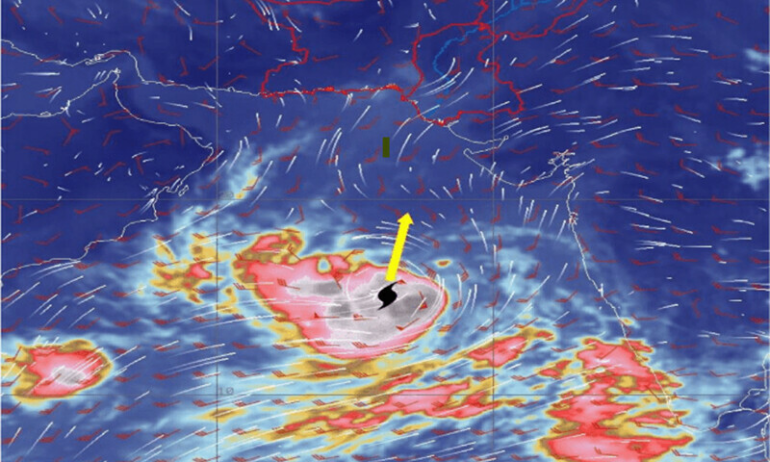Cyclone Biparjoy, which hit India’s Gujarat coast near the Pakistan border, weakened into a depression by Saturday morning, according to the Pakistan Meteorological Department (PMD).
As a result, the PMD declared it safe for fishermen in Balochistan to resume their activities starting today, and for those in Sindh to do so from tomorrow.
Biparjoy, meaning “calamity” in Bengali, made landfall in Gujarat with speeds of up to 125 kph, causing damage to houses, uprooting trees, and disrupting electricity supply. Unfortunately, six people were reported dead in India due to the cyclone before it reached land.
Fortunately, Pakistan was largely spared from the effects of the storm, with no reported deaths. However, some coastal areas experienced increased water levels. Authorities in both countries successfully evacuated over 180,000 people from vulnerable areas.
The PMD reported that Biparjoy had come ashore as a Category 1 cyclone after being a Category 3 in the Arabian Sea. It moved northeastward from Rann of Kutch in India and Tharparkar in Pakistan over the last 12 hours and has now weakened into a depression, currently located over southwest Rajasthan in India and Tharparkar in Pakistan.
The PMD forecasted that the weather system would continue moving eastward and weaken further into a low-pressure area over Rajasthan. Under the influence of this system, Tharparkar, Umerkot, and parts of Badin districts are predicted to experience more rain, thunderstorms, and gusty winds. Thatta, Sujawal, and Mirpurkhas districts may also expect rain and thunderstorms.
Fishermen in Balochistan are permitted to resume their activities from today, while those in Sindh can do so from tomorrow, according to the PMD.
During the past 24 hours, Nagarparkar and Mithi districts in Sindh received the highest recorded rainfall, with 269mm and 196mm respectively. As life gradually returns to normal in Sindh, authorities in Karachi have lifted the ban on going into the open sea. Shops and markets in Thatta have also reopened under drizzling skies and a cool ocean breeze.
In India’s Gujarat, approximately 1,500 villages still remain without electricity, and heavy rains continue to cause flooding in northern districts of the state. However, ports such as Pipavav Port and Kandla Port have resumed operations, with the Adani-owned Mundra Port scheduled to restart operations from Saturday evening.
The cyclone caused extensive damage to power infrastructure in Gujarat, resulting in thousands of electricity poles being uprooted and overhead power lines damaged. Gujarat’s authorities are working to restore electricity supply, provide drinking water, and repair damaged roads and infrastructure on a priority basis. The state government reported that over 700 homes in eight coastal districts suffered full or partial damage.



